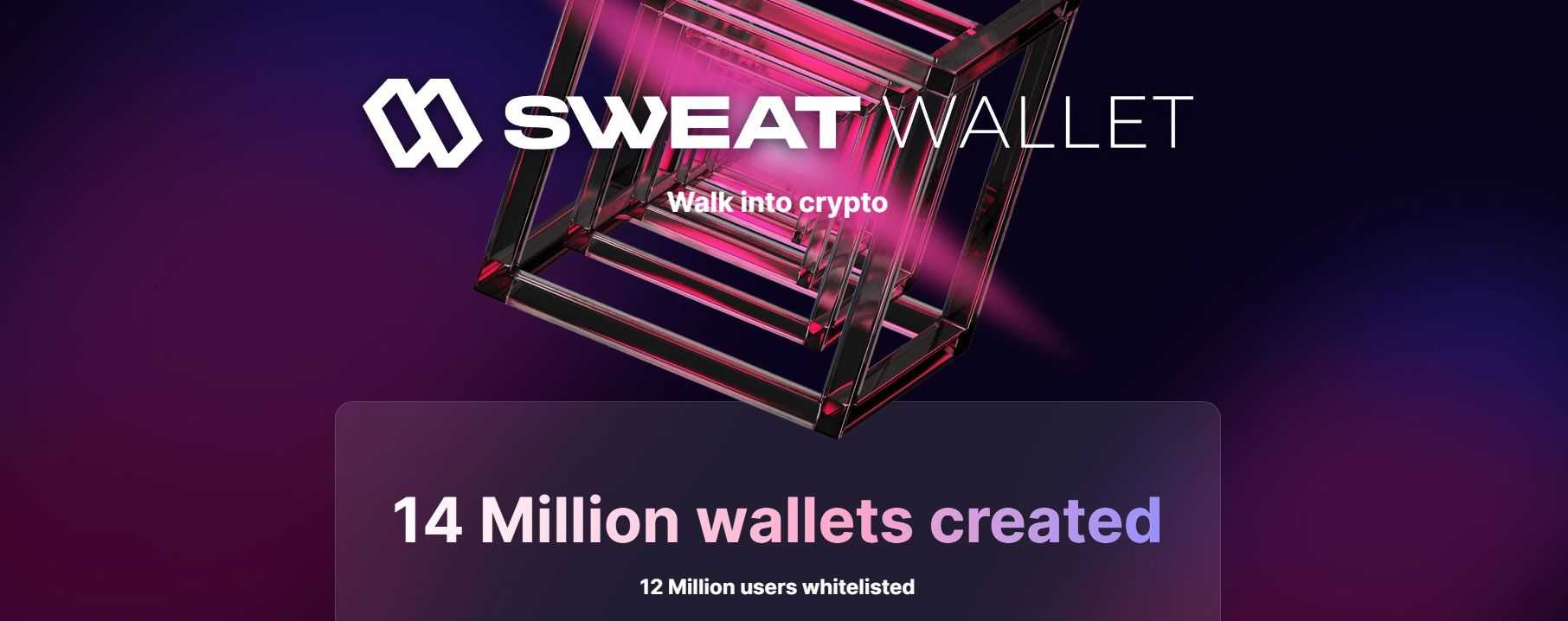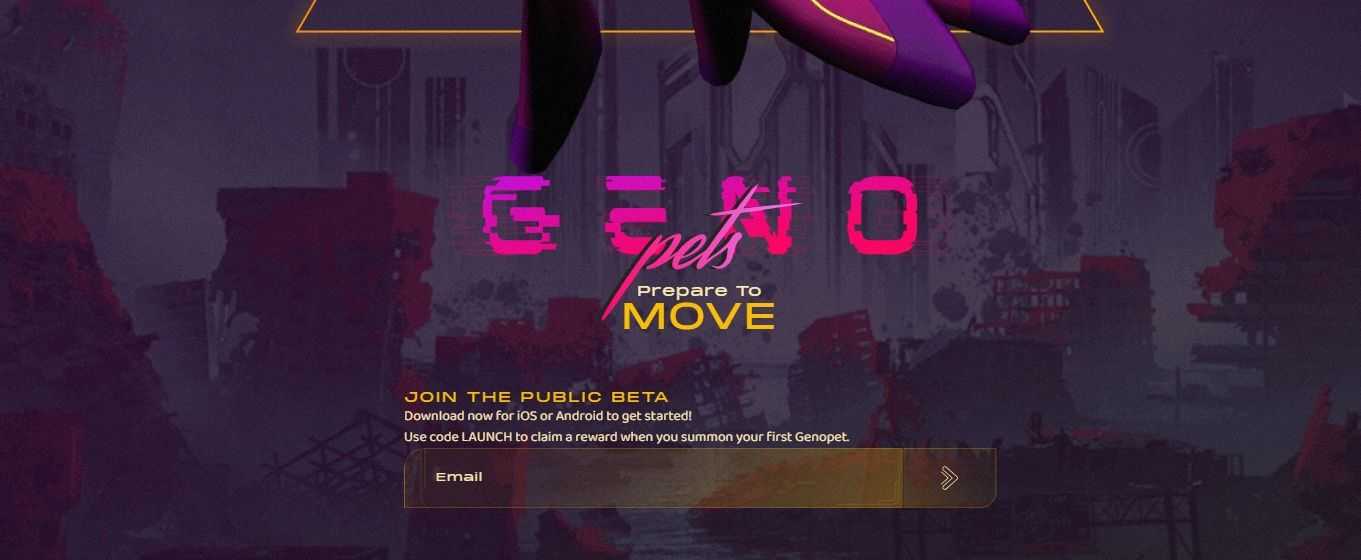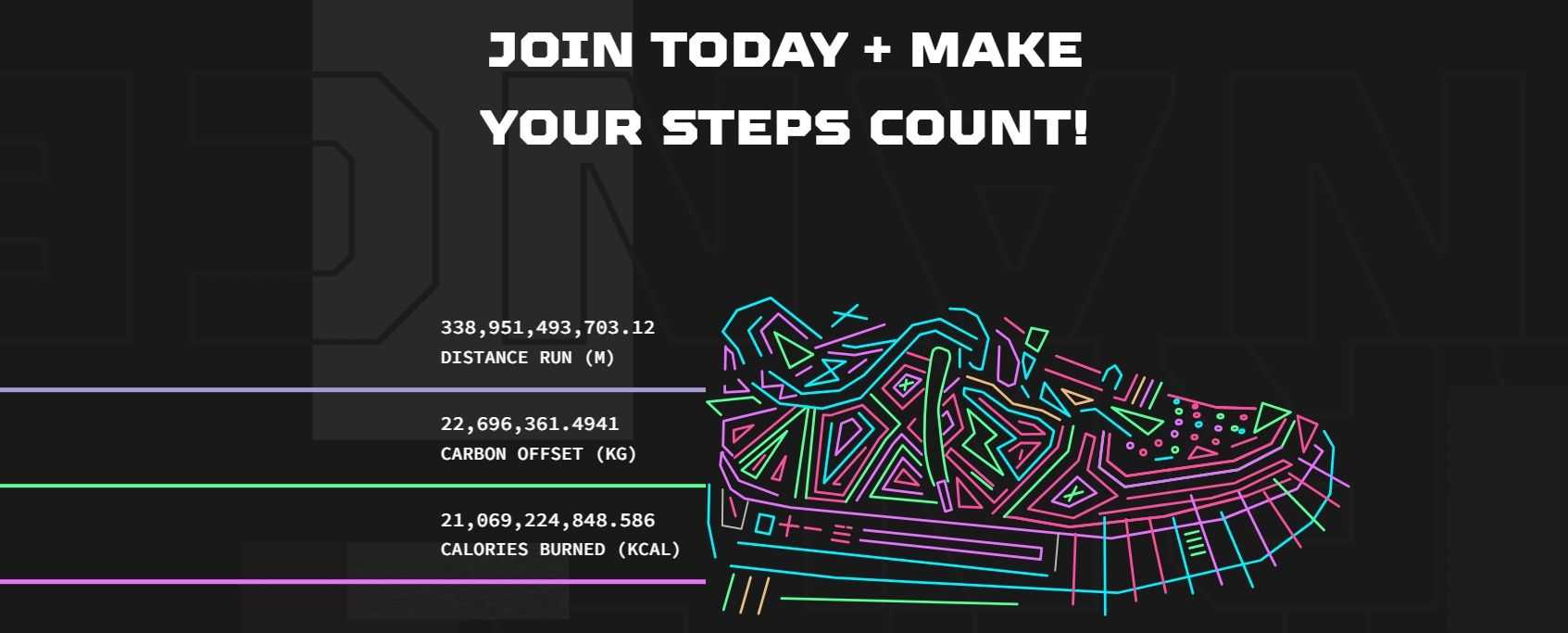Once seen as an outsider's gamble, cryptocurrency is rapidly integrating into mainstream industries—from traditional finance to art, gaming, and even fitness, would you believe? Blockchain technology is transforming how we store value, exchange assets, and even interact with each other.
Imagine a world where running a mile isn't just good for your heart — it also grows your crypto portfolio. This is the reality unfolding before us. From decentralized finance (DeFi) protocols to play-to-earn (P2E) games, blockchain-powered applications are offering new ways for people to earn by participating in activities they already enjoy. Now, with the rise of move-to-earn (M2E) decentralized apps (DApps), fitness is becoming more than just a personal pursuit.
But what exactly makes these platforms so appealing? How do they use blockchain technology to reward users for simply staying active? Can they really revolutionize fitness, or is this just a passing trend in the crypto space? As crypto assets remain volatile, what risks should users be aware of before stepping into this new world of fitness rewards?
In this top move-to-earn DApps analysis, we will dive deep into the platforms that are reshaping how we think about exercise and finance. Whether you’re an avid runner, a casual walker, or just looking to make fitness a more rewarding part of your life, this top M2E DApps analysis will explore how these innovative platforms are merging movement with financial incentives.
What Are Move-to-Earn DApps?
Move-to-earn (M2E) decentralized applications (DApps) are a fusion of fitness and cryptocurrency that reward users for engaging in physical activities. Unlike traditional fitness apps that merely track workouts, M2E DApps provide tangible financial incentives by converting real-world movements — like walking, running, or cycling — into cryptocurrency rewards.
At their core, M2E DApps utilize advanced technologies such as GPS tracking, blockchain, and non-fungible tokens (NFTs) to create a seamless experience where users can earn rewards for their physical activities. For instance, apps like StepN have popularized this model by allowing users to earn tokens for their movements, which can be traded or used within the app ecosystem. The concept of M2E gained significant traction in early 2022, with many platforms emerging to capitalize on the growing interest in fitness and crypto.
The mechanics of M2E DApps involve tracking user activity through smartphones or wearable devices. As users complete fitness tasks, their activity data is uploaded to the blockchain, where it is assessed and converted into rewards — typically in the form of native utility tokens. These tokens can then be utilized within the app for various purposes, such as purchasing in-game assets or trading on cryptocurrency exchanges for other digital currencies.
The success of M2E dApps has led to a diverse range of applications catering to different fitness activities and user preferences. From gamified experiences that encourage competition among users to platforms offering unique NFTs tied to personal achievements, the M2E space is rapidly evolving. As more individuals seek ways to integrate fitness with financial incentives, M2E dApps are poised to play a crucial role in reshaping how we perceive health and wellness in the digital age.
How Move-to-Earn Works
Move-to-Earn (M2E) DApps operate on a straightforward yet innovative premise: they reward users for engaging in physical activities by leveraging blockchain technology. Here’s a closer look at how these platforms function, focusing on the tokenization of physical activity, the types of activities rewarded, the role of blockchain and smart contracts, and the various earning models available.

Tokenization of Physical Activity
At the heart of M2E DApps is the concept of tokenization, which transforms physical activity into digital assets. When users participate in activities like walking, running, or cycling, their movements are tracked through GPS technology or motion sensors integrated into their smartphones or wearables. This data is then recorded on the blockchain, allowing users to earn tokens that represent their efforts.
The tokenization process not only quantifies physical activity but also ensures that rewards are distributed fairly and transparently. Each step or mile can be converted into a specific amount of tokens, creating a direct correlation between effort and reward. This model encourages users to stay active while providing them with a tangible incentive to do so.
Types of Rewarding Activities
Most M2E platforms focus on common physical activities that are easily tracked and accessible to a broad audience. The primary activities rewarded typically include:
- Walking: Walking is one of the simplest forms of exercise, and it is often the most encouraged activity on M2E platforms. Users can earn tokens for every step taken, making it an easy way to incorporate fitness into daily routines.
- Running: For those looking for a more intense workout, running is another popular activity that DApps rewards. Users can earn tokens based on the distance covered and speed.
- Cycling: Many platforms also recognize cycling as a valid form of exercise. Users can earn tokens for miles biked, promoting both fitness and eco-friendly transportation.
By rewarding these activities, M2E DApps cater to various fitness levels and preferences, encouraging broader participation.
The Role of Blockchain and Smart Contracts in Fitness Apps
Blockchain technology plays a critical role in ensuring the integrity and transparency of M2E dApps. By recording user activity on a decentralized ledger, these platforms eliminate concerns about data manipulation or fraud. Each user’s activity is securely logged and verified on the blockchain, providing an immutable record of their efforts.
Smart contracts further enhance this system by automating the reward distribution process. These self-executing contracts automatically trigger token rewards based on predefined conditions—such as completing a specific distance or achieving a fitness goal—without requiring intermediaries. This not only streamlines operations but also builds trust among users who can see exactly how their rewards are calculated and distributed.
Earning Models
M2E DApps offer various earning models that enhance user engagement and provide multiple avenues for financial gain:
- Rewards: The most straightforward model involves earning tokens directly for completing physical activities. Users can track their progress through the app and receive instant rewards based on their performance.
- Staking: Some platforms allow users to stake their earned tokens for additional benefits. By locking up their tokens for a specified period, users can earn interest or receive bonus tokens as rewards, creating a passive income stream.
- NFTs: Non-fungible tokens are becoming increasingly popular within M2E ecosystems. Users can purchase unique NFTs—often representing virtual sneakers or other gear—that enhance their earning potential or provide special bonuses within the app. These NFTs can also appreciate in value over time, adding another layer of financial incentive.
Top Move-to-Earn DApps in 2024
As the M2E landscape continues to grow, several standout applications are leading the charge in merging fitness with cryptocurrency rewards. These DApps not only incentivize users to stay active but also provide a fun and engaging way to earn digital assets.
Let’s explore some of the top M2E DApps in 2024, starting with one of the most popular platforms: Sweat Economy.
Sweat Economy

Sweat Economy is a significant player in the Move-to-Earn (M2E) landscape, building on the foundation laid by its predecessor, Sweatcoin. The app has amassed a user base exceeding 150 million, reflecting its popularity and effectiveness in promoting physical activity through cryptocurrency rewards.
How It Works
Sweat Economy tracks users' movements via their smartphones, converting physical activity into SWEAT tokens. Users earn approximately 1 SWEAT for every 1,000 steps taken initially; however, this rate decreases over time to maintain token scarcity—after one year, users earn about 0.33 SWEAT for every 1,000 steps. This mechanism not only incentivizes daily movement but also encourages long-term engagement with the app.
Earning Potentia
The app offers staking options, allowing users to lock their SWEAT tokens in "Growth Jars" for additional rewards, enhancing their earning potential while contributing to the app's ecosystem. Users can earn up to 5 SWEAT tokens per day, with the possibility of increasing this limit through staking.
Why Choose It?
With its user-friendly interface and robust reward system, Sweat Economy is accessible for everyone—from casual walkers to dedicated fitness enthusiasts. The transition into the Web3 environment enhances its appeal, combining fitness with financial incentives in a unique way.
The Dustland

The Dustland is an innovative entry in the Move-to-Earn (M2E) space, seamlessly combining fitness with an engaging narrative set in a post-apocalyptic world. This unique platform rewards users for physical activity while immersing them in a captivating storyline that motivates them to stay active.
How It Works
Users earn DOSE tokens by completing fitness tasks like walking or running, which are tracked through their smartphones. The app converts these activities into rewards that can be used within the game or traded for cryptocurrencies. This mechanism ensures that every step taken contributes to the user's progress and earnings.
Engaging Narrative
The Dustland features a rich storyline that unfolds as users progress, transforming workouts into thrilling adventures. This gamified approach enhances motivation and keeps users engaged over time, making exercise feel less like a chore and more like an exciting quest.
NFT Integration
The app incorporates non-fungible tokens (NFTs) that unlock special features or provide unique in-game benefits. These NFTs can represent exclusive items, achievements, or even avatars, adding excitement to the experience and allowing users to trade or sell them on secondary markets.
Why Choose It?
The Dustland stands out for its combination of fitness and storytelling, making it perfect for those who enjoy gaming alongside exercising. In addition to digital tokens, users can earn exclusive physical medals for completing specific challenges. This tangible reward component adds an exciting dimension to the fitness journey, bridging the gap between digital achievements and real-world recognition.
SuperWalk

SuperWalk rewards users for walking and running, seamlessly integrating fitness tracking with cryptocurrency incentives. Designed to promote a healthier lifestyle while offering financial rewards, SuperWalk leverages blockchain technology to create an engaging experience for users.
How It Works
Users earn tokens by participating in various activities within the app. The primary method of earning is through step-based rewards, where the number of steps taken directly translates into token accumulation. The app tracks physical activity via GPS and motion sensors, ensuring accurate reward distribution.
Dual Token Model
SuperWalk employs a dual token system featuring $WALK and $GRND. While $GRND serves as the main currency for in-app purchases and activities, $WALK is used for repairing and leveling up virtual items, enhancing user engagement. Additionally, GRND tokens can be utilized for auctions and special features within the app.
NFT Integration
Users can purchase NFT shoes that influence their earning potential. These virtual shoes have varying stats and can be upgraded, adding a gamified element to the fitness experience. Upgrading these shoes requires GRND tokens, which further ties the token economy to user engagement. The platform also offers a Basic Mode without NFTs, allowing users to earn points through walking without needing to invest in digital assets.
Why Choose It?
SuperWalk stands out for its combination of fitness tracking and cryptocurrency rewards, making it an appealing choice for those looking to earn while staying active. Its engaging features, dual token model, and community-driven approach create a motivating environment for users at all fitness levels.
dexGO

dexGO is another M2E platform that combines fitness with cryptocurrency rewards, allowing users to earn tokens while engaging in physical activities. This app stands out by integrating elements of DeFi and gamification, making fitness not only rewarding but also engaging.
How It Works
Users earn tokens by completing various fitness tasks, such as walking, running, or cycling. The app tracks these activities through GPS technology, converting movements into rewards that can be traded or used within the platform. This ensures that users receive accurate rewards based on their physical activity.
Dual Token System
dexGO utilizes a dual-token model, which enhances user engagement and encourages participation. Users can earn rewards in the form of native tokens that can be exchanged for other cryptocurrencies or used for in-app purchases. The two tokens typically include a utility token for transactions and a governance token for decision-making within the platform, aligning with common practices in DeFi projects.
NFT Integration
The platform incorporates NFTs that provide unique benefits and can appreciate in value. Users can purchase virtual items that enhance their earning potential, adding a layer of strategy to their fitness journey. These NFTs often have specific attributes that can influence the rewards users receive based on their activities.
Why Choose It?
dexGO stands out by seamlessly blending fitness tracking with a dual-token model that enhances user engagement and offers real financial incentives. Its gamified experience transforms workouts into exciting challenges, while community features like leaderboards foster motivation and camaraderie.
Genopets

Genopets is a pioneering Move-to-Earn (M2E) platform that combines fitness, gaming, and cryptocurrency rewards in a unique way. Built on the Solana blockchain, this free-to-play NFT mobile game encourages users to stay active by rewarding them for walking and other physical activities while nurturing and evolving their digital pets.
How It Works
Users earn rewards by engaging in physical activity, which is tracked through their smartphones. The steps taken are converted into Energy, which can be used to level up Genopets and participate in various in-game activities. The game incorporates various mini-games that challenge players' cognitive abilities while rewarding them for physical activity.
Dual Token System
Genopets utilizes a dual-token model comprising $GENE (the governance token) and $KI (the in-game token). Players can earn $KI through gameplay, which can be used for in-game purchases or traded on exchanges. The GENE token allows holders to participate in governance decisions, stake for rewards, and access exclusive content, enhancing community involvement.
NFT Integration
Users can mint and trade Genopet NFTs, which represent their unique digital pets. These NFTs can be upgraded and customized, adding depth to the gameplay experience. Players can also acquire habitats for their Genopets to enhance their earning potential, further integrating the NFT aspect into the game.
Why Choose It? Genopets combines fitness, gaming, and crypto rewards in a unique, free-to-play model that requires no upfront investment. Physical activity is converted into Energy to power gameplay, encouraging users to stay active while evolving digital pets. Its dual-token system supports governance and in-game purchases, while NFT integration enables customization and trading.
Steps App

Steps App rewards users for staying active, combining fitness with blockchain technology to create an engaging experience. Built on the Avalanche blockchain, Steps App motivates users to walk, run, and engage in various physical activities while earning cryptocurrency.
How It Works
Users begin by staking NFT sneakers known as SNEAKs, which are upgradeable and enhance earning potential. By participating in activities tracked through the app, users earn KCAL tokens, the platform's utility token, which can be used for purchasing additional SNEAKs or entering competitions.
Dual Token System
Steps App features a dual-token model with $KCAL as the utility token and $FITFI as the governance token. The $FITFI token allows users to participate in decision-making processes regarding platform governance, including revenue splits and development milestones.
Gamification Elements
The app incorporates gamification features that allow users to compete locally and globally. This competitive aspect not only makes exercising more enjoyable but also encourages users to stay committed to their fitness goals.
Why Choose It?
With over 20 million users and a focus on community engagement, Steps App offers a unique approach to M2E. Its blend of gamification, community involvement, and cryptocurrency rewards makes it an appealing choice for anyone looking to enhance their fitness journey while earning digital assets. Additionally, the ability to stake $FITFI tokens for rewards further enriches user engagement while fostering a sense of ownership within the platform's ecosystem.
StepN

StepN is a unique M2E platform that has garnered significant attention since its launch in March 2022. Built on the Solana blockchain, StepN combines fitness with blockchain technology, allowing users to earn cryptocurrency by walking, jogging, or running outdoors while wearing NFT sneakers.
How It Works
Users must first acquire NFT sneakers, which can be purchased or rented within the app. The app tracks physical activity using GPS, converting movements into rewards. Users earn Green Satoshi Tokens (GST) for their efforts, which can be used to mint new sneakers, repair existing ones, or level them up.
Dual Token System: StepN operates with two main tokens.
- GST (Green Satoshi Token): The primary utility token earned through physical activity.
- GMT (Green Metaverse Token): Used for governance within the platform and can be earned by users who level their NFT sneakers to level 30 or above.
Environmental Focus
StepN aims to promote healthier lifestyles while contributing to carbon neutrality, making it not just a fitness app but also a socially responsible initiative through its environmental initiatives.
Why Choose It?
With its engaging mechanics and community-driven approach, StepN appeals to both fitness enthusiasts and crypto investors. Its combination of exercise and earning potential creates an exciting environment for users looking to improve their health while exploring the world of cryptocurrency. Moreover, the burning mechanism for GST tokens helps stabilize their value over time, adding an extra layer of security for investors.
Benefits of Move-to-Earn DApps
Here are some of the key benefits of using M2E platforms:
Financial Rewards for Staying Healthy
One of the most enticing aspects of M2E dApps is the opportunity to earn cryptocurrency simply by engaging in physical activities. Users can accumulate tokens through everyday actions like walking, running, or cycling, turning their fitness efforts into a potential source of income. This financial incentive encourages individuals to adopt healthier lifestyles while also providing a tangible reward for their hard work.
Gamification and Social Motivation to Stay Fit
M2E platforms often incorporate gamified elements that make exercising more enjoyable. Features like leaderboards, challenges, and rewards for achieving milestones create a competitive atmosphere that motivates users to push themselves further. Additionally, many dApps foster community engagement by allowing users to team up with friends or join groups, enhancing social interaction and accountability. This sense of community can be a powerful motivator, helping users stay committed to their fitness goals.
Personalized Fitness Programs Based on Data
Many M2E dApps utilize data analytics to offer personalized fitness programs tailored to individual user needs. By tracking users' activities and progress over time, these platforms can provide customized recommendations that optimize workouts and enhance overall performance. This personalized approach not only improves user experience but also helps individuals achieve their fitness goals more effectively.
Creating a Healthy Lifestyle While Earning Crypto
M2E dApps provide a unique opportunity to blend fitness with financial gain. Users can seamlessly integrate exercise into their daily routines while earning cryptocurrency rewards. This dual benefit encourages individuals to prioritize their health without feeling like they are sacrificing time or effort for financial gain. As users become more active and engaged with these platforms, they often find themselves adopting healthier habits that extend beyond the app.
How to Choose the Right Move-to-Earn DApp
Selecting the right move2earn DApp can significantly impact your fitness journey and earning potential.

Here are key factors to consider when making your choice:
Usability
Look for an app with a user-friendly interface that makes navigation intuitive. A well-designed app enhances your experience, making it easier to track your activities and rewards. Check user reviews and ratings to gauge overall satisfaction.
Reward Types
Different M2E platforms offer various reward structures. Some may provide immediate token rewards for physical activities, while others might incorporate staking or NFT features. Understand how rewards are earned and spent within the app to align with your fitness goals.
Supported Activities
Ensure the app supports the physical activities you enjoy, whether it's walking, running, cycling, or even more niche exercises. The broader the range of activities, the more likely you are to stay engaged and earn rewards consistently.
In-App Economics
Familiarize yourself with the app's tokenomics, including how tokens are earned, staked, and spent. Understanding these mechanics helps you assess the potential profitability and sustainability of your engagement with the platform.
Privacy and Security
Data privacy is crucial, especially in fitness apps that track personal activity. Investigate how the app handles user data and what security measures are in place to protect your information.
Minimal Upfront Investment
Many M2E dApps require an initial investment in NFTs or tokens. Look for platforms that allow participation with minimal upfront costs to reduce financial risk while exploring their offerings.
Risks and Challenges of Move-to-Earn DApps
While these DApps offer exciting opportunities for users to earn cryptocurrency through physical activity, they also come with inherent risks and challenges that potential users should be aware of.
Market Saturation
As more users join M2E platforms, the reward pools can become diluted. This saturation means that the rewards earned may decrease over time, making it increasingly challenging to achieve profitability. As the number of participants grows, the same pool of rewards is divided among more users, potentially lowering individual earnings.
Fraud and Manipulation
M2E applications are often targets for manipulation. Some individuals may use bots or other methods to generate false exercise data, siphoning off rewards meant for legitimate users. Although many platforms are actively working to combat these issues, fraudulent activities can still impact the overall integrity of the reward system.
Initial Investment Costs
Most M2E DApps require an upfront investment in NFTs or tokens to maximize earning potential. This initial cost can be a barrier for some users and may lead to financial losses if the platform does not deliver on its promises or if market conditions change unfavorably.
Technical Vulnerabilities
Like all decentralized applications, M2E DApps can suffer from technical vulnerabilities, including flawed smart contracts. Weak coding can expose users to hacks and loss of funds, making it essential for developers to prioritize security audits before launching their platforms.
Move-to-Earn and the Future of Fitness
The move-to-earn model not only encourages individuals to adopt healthier lifestyles but also integrates seamlessly with the growing interest in blockchain technology.
Transformative Potential
As M2E apps gain popularity, they are set to revolutionize how we view exercise. Users can earn tokens for simply moving, turning everyday activities into financial rewards. This model has the potential to motivate millions to engage in regular physical activity, addressing the widespread issue of sedentary lifestyles.
Technological Advancements
With ongoing advancements in wearable technology and mobile applications, future M2E platforms are likely to incorporate features such as advanced tracking, virtual reality workouts, and deeper integration with users' digital lives. These enhancements will create more immersive and rewarding experiences, further motivating users to stay active.
Top Move to Earn DApps: Closing Thoughts
In this exploration of move-to-earn DApps, we highlighted some of the top platforms transforming the fitness landscape. Each of these applications offers unique features and incentives, encouraging users to stay active while earning cryptocurrency rewards.
M2E DApps are revolutionizing both fitness and finance by turning physical activity into a rewarding endeavor. Users can earn tokens for everyday movements, creating a direct link between health and financial gain. This innovative approach not only motivates individuals to adopt healthier lifestyles but also introduces them to the world of cryptocurrency, making fitness more accessible and engaging.
With a growing array of platforms offering diverse rewards and community engagement, who knows this might become a part of our lives in the future. Health is wealth, after all!
Frequently Asked Questions
M2E dApps are blockchain-based applications that reward users with cryptocurrency for engaging in physical activities like walking, running, or cycling. These apps use tracking technology, such as GPS or motion sensors, to log users' movements. The activity data is then recorded on the blockchain, where it’s converted into rewards, usually in the form of tokens. Some platforms also allow users to stake tokens or use NFTs to enhance their earning potential.
Many M2E platforms require an initial investment, such as purchasing NFT sneakers or tokens, to unlock full earning potential. However, some apps offer free-to-play models or minimal entry costs, making them accessible for users who want to try the platform before committing financially. It’s important to assess the app’s economics and upfront costs to ensure the investment aligns with your goals.
Rewards are typically earned in the form of native tokens, which users accumulate based on the tracked physical activities. These tokens can often be traded on cryptocurrency exchanges for other cryptocurrencies or fiat currencies like USD. However, the value of these tokens can fluctuate depending on market conditions, so earnings are subject to crypto market volatility.
While most M2E dApps use blockchain to provide transparency and prevent fraud, there are still risks. Users should review the app’s privacy policy to understand how personal data is handled. Additionally, since some platforms require investment in NFTs or tokens, users should look for secure platforms that have undergone security audits and take precautions against hacks and smart contract vulnerabilities.
Benefits: M2E dApps provide financial incentives to stay active, gamify fitness through challenges and leaderboards, and encourage healthier lifestyles. Some apps also offer social engagement, creating a sense of community among users.
Risks: Crypto market volatility can impact token value, and initial investments in NFTs or tokens may not guarantee returns. There’s also a risk of technical issues or data privacy concerns, as fitness apps collect and store personal activity data. Users need to carefully evaluate the app’s mechanics and sustainability before diving in.
Disclaimer: These are the writer’s opinions and should not be considered investment advice. Readers should do their own research.


